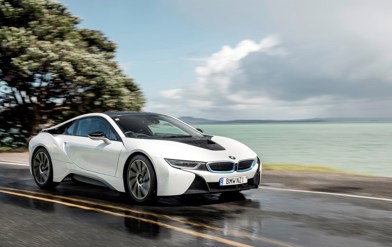New Zealand was one of the first countries where Nissan sold the original all-electric Leaf hatchback, but unfortunately it was hit with early adopter syndrome.
From 2012 to 2017, Nissan NZ sold fewer than 100 new Leafs, but that is about to change. The second-generation Leaf is launching here soon, arriving as Kiwis have espoused EVs, with the lineup expanding from hatchback to sedan and SUVs.
The new Leaf is priced from $59,990 with a range of 270km thanks to a 40kWh battery producing 110kW and 320Nm, plus zero emission.
At the Australasian launch in Melbourne, Nissan NZ’s managing director, John Manley, said the first two shipments of the Leaf were arriving in Auckland mid-August. The 110 Leafs that will arrive at dealerships are expected to sell quickly.
Manley said nearly 300 Nissan NZ staff — from technicians, to sales, to service — would be trained about the Leaf.
“They are not selling a car, but you are almost selling a lifestyle,” said Manley “If someone comes into a Nissan dealership and says, ‘I have a Qashqai, tell me about a Leaf’ you can’t say, ‘It’s just a car with an electric motor’. It’s quite a different scenario.”
Nissan was the first car manufacturer to launch an EV for the public in 2010 and is world leader with 420,000 Leafs sold in 51 markets.
Since then, there has been an influx of imported Leafs from the UK and Japan. For Manley, that means a large amount of data from Leaf owners on how their vehicles perform here.
Worldwide, having the first EV hatchback means Nissan has vast experience in battery and cell technology. The battery is outlasting the Leaf hatchback and Nissan is recycling 98 per cent of batteries.

NZ Transport data shows there are more than 3.2 million petrol cars on our roads, compared to almost 15,000 electric vehicles.
While the Government announced plans for a cleaner emission fleet and proposal for EV “feebate”, Manley said the way to increase green fleets was “ people putting their money where their mouth is”.
“Companies who make statements about their sustainability, etc, need to be seen to be doing it.
“For example, sales reps don’t need cars to drive to Wellington and back, they drive around Auckland. The Leaf would be perfect for it.”
The second-generation Leaf has gone from that strange hatchback to looking stunning front and back. It’s packed with technology; a 360-degree view monitor, pedestrian detection, intelligent cruise control, rear cross traffic alert and blind spot monitoring.
Its 8in infotainment system includes Apple CarPlay/Android. Nissan says the heated leather seats are the most efficient way to heat people in a car. The battery gets an eight-year “state of health” warranty. The Leaf gets a five-year vehicle warranty.
The angle of the charging port has moved so that you insert it down into the Leaf rather than kneel to place it up into the port.
The interior has a clean dash and a minimalist feel. There’s plenty leg- and headroom front and back — as Manley found when he was our rear-seat passenger during a drive in Melbourne.
So, what is the Leaf like to drive? On the motorway from the airport, the Leaf had the expected take-off torque you get from an EV with rapid acceleration for overtaking. In the ‘burbs, which is the habitat you’d find one in, it had smooth handling and a comfortable ride.
What impressed most was the Leaf’s e-Pedal switch that increases regenerative braking and gives you “one pedal” driving. Lift your foot off the accelerator and it immediately slows, so you don’t have to brake. But be warned, it doesn’t come to a complete stop, as we found when we approached a red light.
Though NZ city roads may be festooned with imported first-generation Leafs, what makes this one special is bi-directional charging using a new home charger. Manley says it is being tested here and should be available by the end of year.
With bi-directional charging you can use a free charging station during the day, come home and during peak power usage — such as dinner time — the Leaf can power your home.
Then, you can charge your Leaf off-peak, during the night.
“There is this whole package that we're paying for: a petrol car, the petrol, plus your home energy. And here's one car, the Leaf, that does all of those things. That's a great opportunity,” said Manley.
With just a standard three-prong wall plug, you can make savings. Nissan Australia’s were based on spending A$1800 a year on fuel with a petrol vehicle. But charging in peak time would cost A$764.50 annually, off-peak it’s down to A$382.
NISSAN LEAF
$59,990
RANGE: 270KM, BATTERY 110KW/320NM
Pros: Style, bi-directional charging
Cons: Tainted by used import Leafs




